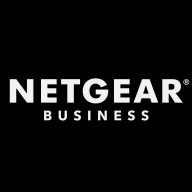

Netgear and Ubiquiti UniFi Switches compete in the network switch market. Ubiquiti UniFi appears to have an edge due to its advanced network traffic control features and centralized management capabilities.
Features: Netgear Switches are affordable, easy to set up, and energy-efficient. They are ideal for small enterprise networks with excellent remote management capabilities. Ubiquiti UniFi Switches offer centralized management, advanced Layer 3 support, and exceptional data throughput, benefiting network traffic control and scalability.
Room for Improvement: Netgear could enhance security features, virtual stacking, and third-party compatibility for complex enterprises. Ubiquiti needs to improve VPN and security features, streamline management tools, and enhance integration with external systems.
Ease of Deployment and Customer Service: Netgear is reliable for on-premises deployment and offers good customer service, although support channels need clarification. Ubiquiti offers flexible deployment options, including hybrid cloud, but relies heavily on community forums, which may not suit less experienced users.
Pricing and ROI: Netgear provides a competitive price-to-performance ratio with lifetime warranties and no extensive licensing fees. Ubiquiti UniFi offers cost-effective solutions without licensing costs, appealing to small and medium-sized businesses. The pricing is favorable compared to high-end competitors, facilitating easier deployments.
Another solution offered to us was more than double the price, making UniFi a cost-effective choice.
We saw a return on investment within a year, although I believe there's more potential to be leveraged.
There are issues distinguishing which switches support cloud features.
The team is knowledgeable and efficient.
the manuals, installation videos, and resources on the website are very good and straightforward.
They have a large customer base that sometimes faces issues due to a lack of know-how in managing the devices.
The scalability of NETGEAR Switches is easy and very beneficial for us.
NETGEAR's scalability through its Insight Cloud system is on par with Ubiquiti's, although it must offer features beyond its competitors.
We used to use a lot of the 4300 switches and they're not completely compatible with the new AV line.
I rate the scalability as nine out of ten.
If planning for future scalability, choosing switches that support extra modules for fiber optics is advisable.
The solution is sufficiently scalable because the switches can be stacked.
We've experienced failures such as a 16-port dying after three to four years.
I rarely see glitches, but we had some minor glitches over the past years, and they were easily resolved.
I did not experience any problems the whole year.
We have never experienced any problems with Ubiquiti UniFi Switches as they are consistently stable.
The switches are stable and there have been no outages.
They should introduce features like dual firmware or dual boot that allow systems to be updated without downtime.
Real-time analytics would be helpful regarding the analytics aspect, and this feature is not yet present and would be an improvement regarding analytics.
They can improve on the commercial part, specifically the cost, as it is higher than other brands.
The current setup is closed and does not allow for integration with non-Ubiquiti VoIP devices or providers outside their ecosystem.
Recent updates have removed many options available in earlier versions, simplifying the interface but limiting control.
The choice depends on the network architecture and planning for the future scalability requirements.
Some high-end switches required for specific advanced features, like precision time protocols, can be more expensive.
It is an expensive product.
Many vendors mark up prices significantly.
Pricing is very favorable, with minimal licensing involved.
Our investment in Ubiquiti is about £30,000, and it's a cost-effective solution since there is no subscription fee.
The most valuable features are routing and access control.
The precision time protocol feature caught our interest for future use in specific settings like churches, where low latency is required.
The best things about NETGEAR Switches are the support they provide and the ease of implementation.
I can manage user connectivity, limit bandwidth, apply MAC address filtering, and it offers POE capabilities.
The switches enable management from anywhere using the cloud controller, making configuration changes and management easier.
I was involved in Kenya's last general elections where we used Ubiquiti equipment, both wireless and switching, which performed excellently.
| Product | Market Share (%) |
|---|---|
| Ubiquiti UniFi Switches | 7.7% |
| NETGEAR Switches | 7.7% |
| Other | 84.6% |


| Company Size | Count |
|---|---|
| Small Business | 43 |
| Midsize Enterprise | 4 |
| Large Enterprise | 11 |
| Company Size | Count |
|---|---|
| Small Business | 45 |
| Midsize Enterprise | 8 |
| Large Enterprise | 1 |
NETGEAR Ethernet Switches is an Ethernet solution that offers businesses of all sizes the ability to easily set up secure and highly scalable networks. Small to medium-sized companies have the option to choose from three different switching options. The three options that are most appropriate for businesses of this size are the NETGEAR Unmanaged, Plus, and Smart Switch solutions. If you're managing a large enterprise network or a campus network, then NETGEAR Fully Managed Infrastructures is the solution for you. All the NETGEAR Ethernet Switches and solutions are innovative, easy to install and use, reliable, and very cost-effective.
NETGEAR Ethernet Switches have many features that make them a most effective product. Included in these is the ability to virtually stack IP addresses in such a way that users can scale their network up with ease. These IP addresses are grouped together. Once additional data ports are connected, you have only a single switch to manage and you gain both a much higher level availability of data and a greater level of network resilience.
Benefits of NETGEAR Ethernet Switches
Some of the benefits of using NETGEAR Ethernet Switches include:
Reviews from Real Users
There are a number of characteristics that make NETGEAR Ethernet Switches extremely effective. Two major ones are its inherent flexibility and its user-friendly nature.
PeerSpot user Kevin W., a network delivery architect at a tech-services company, notes that NETGEAR Ethernet Switches gives users the ability to tailor the switches to fit their needs. He writes, "The big winner for NETGEAR is their modular switch: the 96X version. That is something that you don't see in the market anywhere else, except for Cisco who has it at a high level for a high expense. The ability to customize your own switch with their modules is a big plus for what we do in the market right now. Instead of having to piece together standardized switches, trying to make something work, or fitting the design into the mold, the modular switches are aware that you can make a mark in the industry because you purchased one switch and design with different modules added and removed later on for functionality."
PeerSpot user Chris W., a system engineer at Diversified, notes just how easy they are to use when he writes, "The ease of use of these switches is very good because of the Cisco CLI. If you are familiar with CLI, then you can configure the switch that way. It also has a relatively straightforward web interface. Using the web interface is good for beginners or people who aren't familiar with Cisco CLI. However, having a common command line interface method is great for some of our more advanced guys who are familiar with it."
Ubiquiti UniFi Switches are managed Gigabit switches (Available with 24 or 48 RJ45 Gigabit ports) designed to meet all your network needs while delivering excellent performance. The switches’ excellent network performance is combined with fiber connectivity that includes two SFP ports and the ability to process traffic without putting packet loss at risk.
Ubiquiti UniFi Switches Are:
Ubiquiti UniFi Switches Support These Three Output Modes:
Ubiquiti UniFi Switches Support These Three Input Modes:
Ubiquiti UniFi Switches Features:
Benefits of Ubiquiti UniFi Switches:
Reviews from Real Users
A PeerSpot user who is a Director of Technical Operations/CTO at a consultancy says "The ability to deploy quickly and then having one central location for all the settings are its most valuable aspects."
"The integration with the controller is one of the most valuable features of these switches. They are also very stable. For example, we have some equipment that we haven't touched for four years that is still reliable," says Doru I., Senior solutions architect at Aplix Technologies
Murali S., Management Consultant at a consultancy, explains that “For the world where you have to balance traffic and traffic loads and bandwidth, their GUI makes it really easy because the switches, though they are enterprise grade level two or level three switches, the GUI is designed so that it's easy to set up VLANs where you need to control your traffic so that your phones don't break up and get choppy because of other people loading the network down too heavily."
We monitor all Ethernet Switches reviews to prevent fraudulent reviews and keep review quality high. We do not post reviews by company employees or direct competitors. We validate each review for authenticity via cross-reference with LinkedIn, and personal follow-up with the reviewer when necessary.